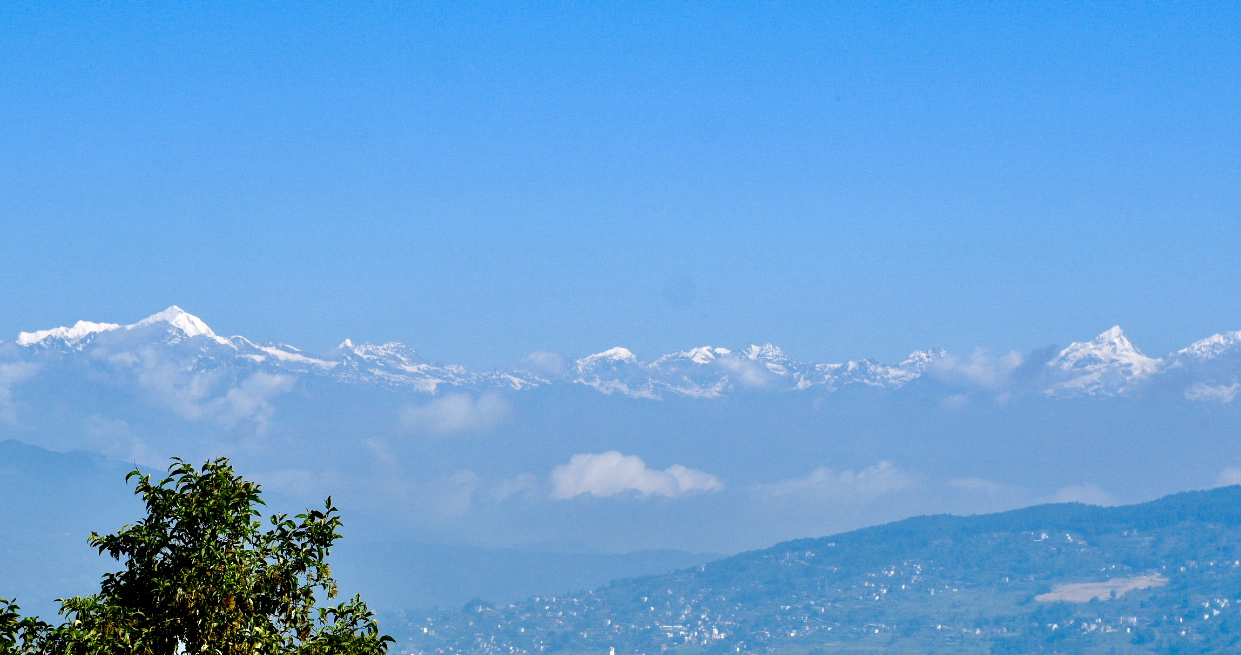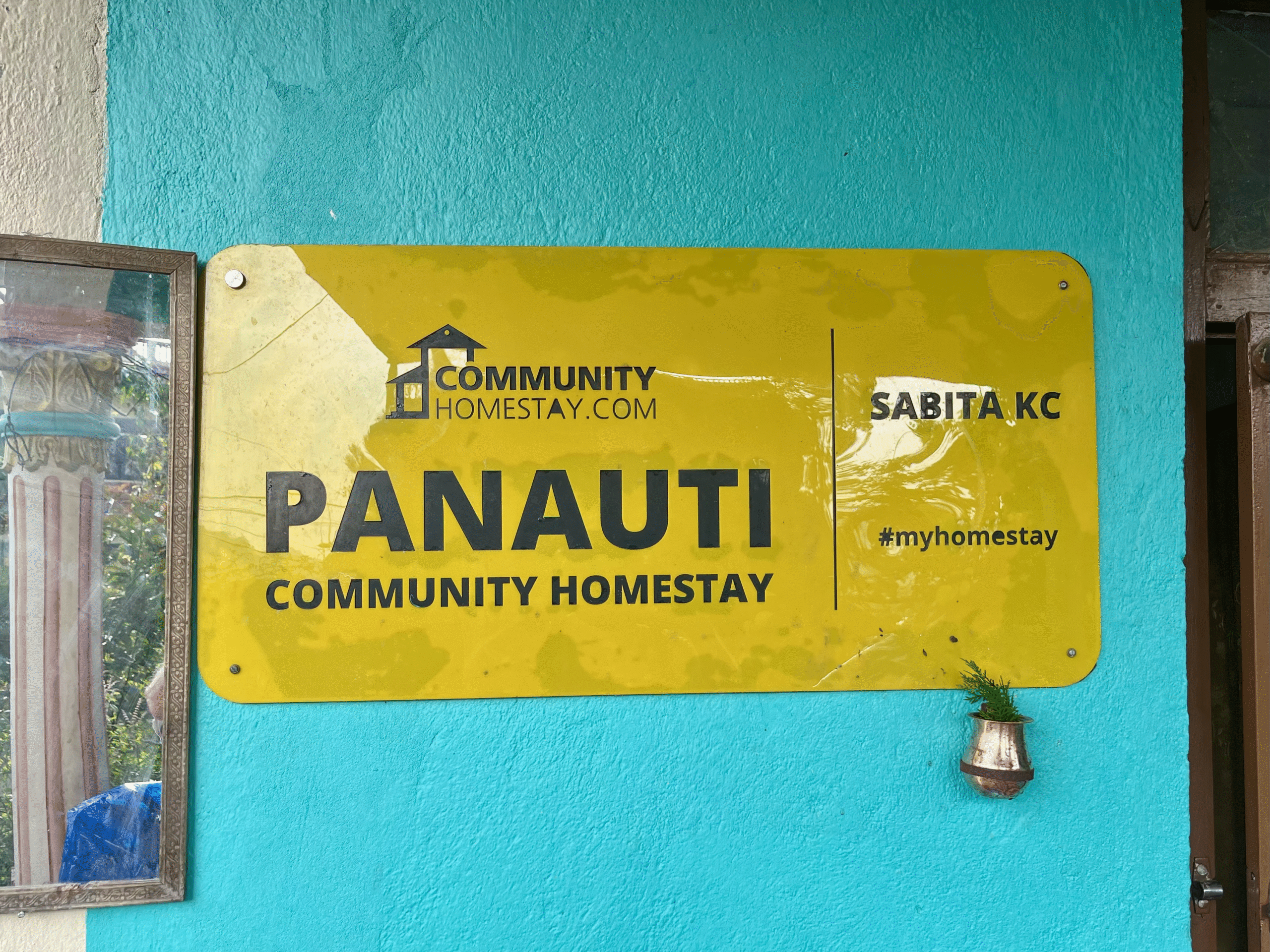The Joy and Adventure of Travel:
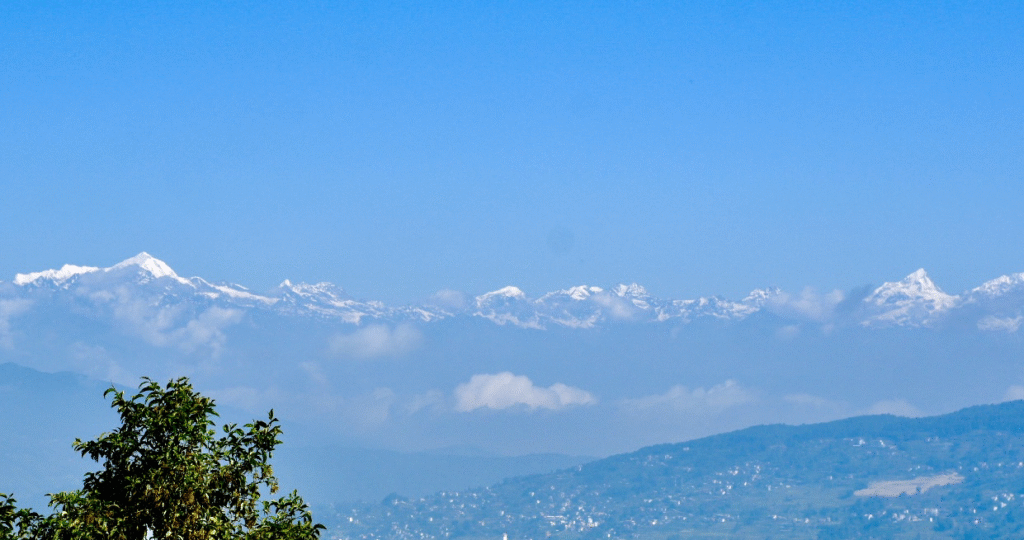
It turned out that the timing of our Nepal journey fell near the end of Bada Dashain, which is the largest Hindu festival in the country. The festival lasts several weeks, with the dates determined by moon phases. Various days have different symbolic rituals, culminating in Kojagrat Purnima on the full moon. Kojagrat literally means “Who is Awake?” This is the night the Goddess Lakshmi comes out to shower those who are awake with wealth and prosperity. People stay up playing cards, gambling, with small amounts of money, and having a big, happy time with friends and family. Another ritual is the application of Tika to your forehead. Made of rice, yogurt, and vermillion, Tika may be applied more than once, so it starts to build up….and drop off, staining everything bright red. It is everywhere by the end of the festival. We were touched when we received our Tika, along with a small amount of paper money, as is the tradition. Most people travel to their hometowns to be with family during some or all of the festivities.
 Over the Pass
Over the Pass
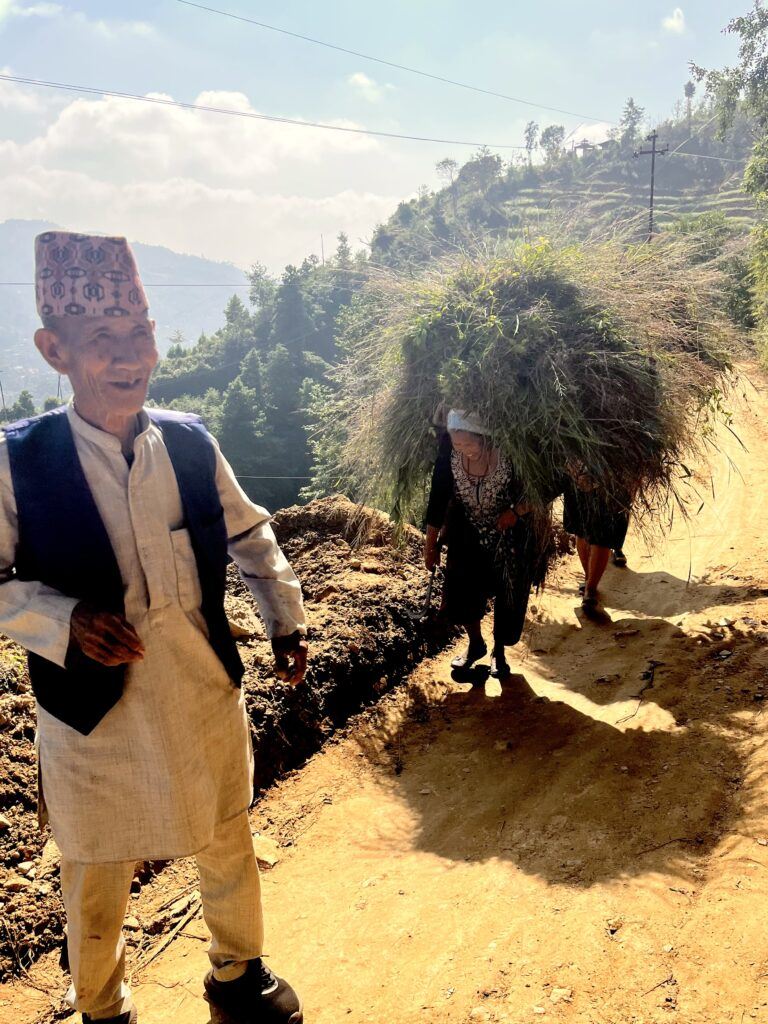 Working hard
Working hard
Something that we found incredibly comforting is their attitude toward tourists compared to other countries we’ve visited. In Nepal, travelers are thought to be sent from the heavens, and are not only revered, but are also depended upon for their contributions to the economy. Other Asian cities and countries certainly are happy for your tourism money, but deep down, they aren’t necessarily overjoyed with the intrusion.
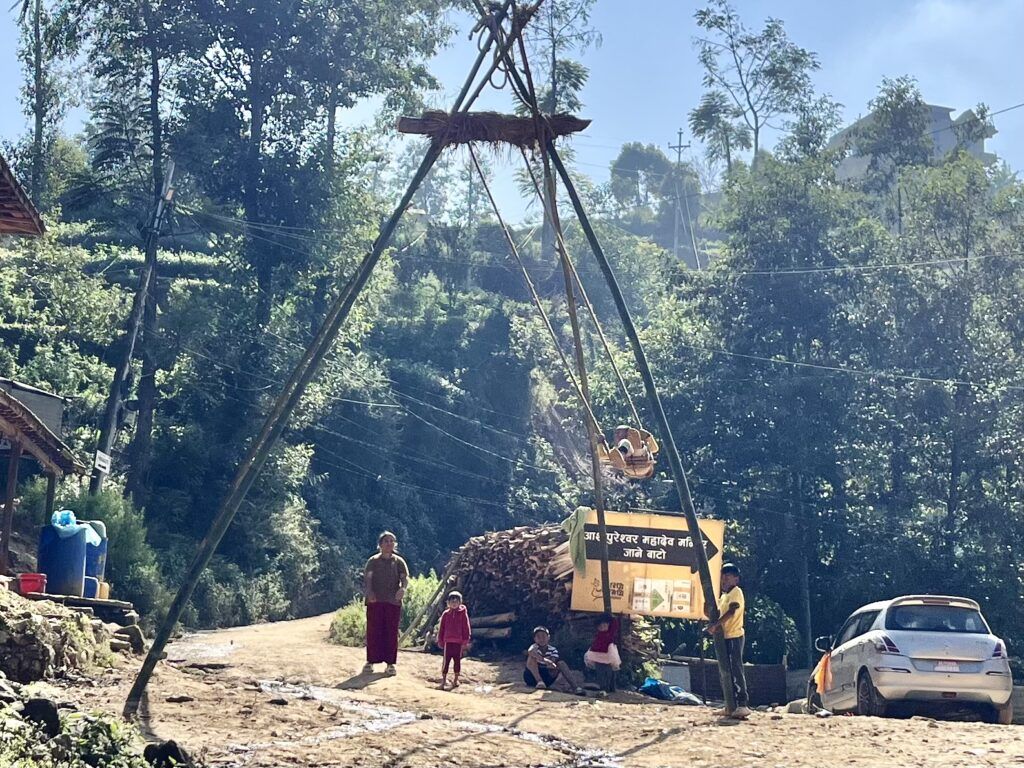 Swing
Swing
Another thing that we saw often…even on the trail to Panauti, were big bamboo swings known as “Linge Ping” which are abstractly shaped as a representation of the Hindu God Shiva. Holding significant cultural and spiritual symbolism, they are a focal point of the community, especially during the Dashain festival. Leaving the ground on a swing is believed to grant one a safe passage after death, as well as unburdening the soul of the trying times of the last year. I love the thought of a fresh transcendence….as in give yourself a fun break! We have seen giant swings like these all over in our travels…in the Carpathian Mountains in Ukraine, Japan, Bangkok, and in between. So, as I’ve been saying about swings since I was a kid, “Hop on”!
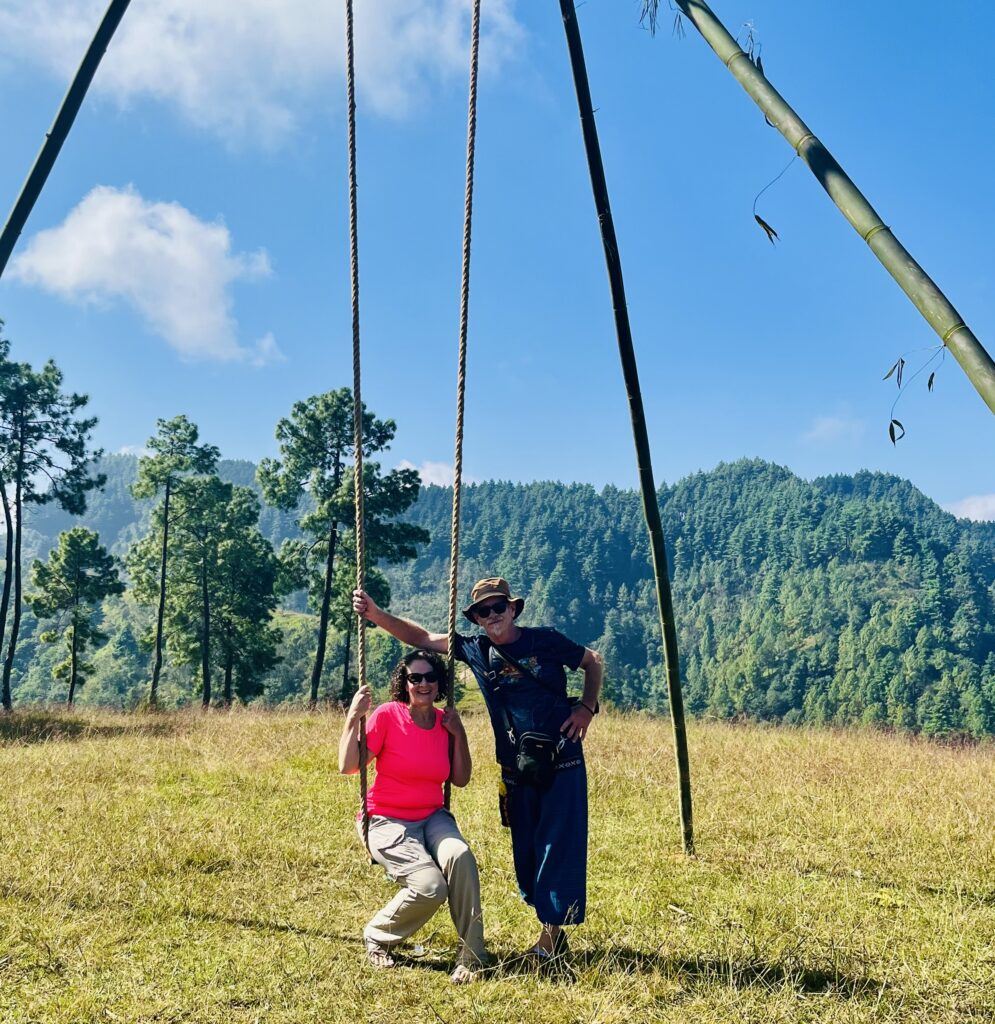
Trek to The Panauti Homestay
Being all too familiar with crowded cities, at the beginning of our trip, we only spent one night in Kathmandu, and left the city the next morning for our 12 km walk to Panauti. We tried out home stays in Thailand from our home base in Bangkok, and trying them out in Nepal seemed a good idea. We are always curious about other people and their way of life. Sadly, there had been devastating flooding and landslides similar to those home in Western North Carolina, as well as in Northern Thailand, experienced during the same few weeks. Our guide’s 19-year-old brother had died in one of the landslides. We saw dozens and dozens of slides on the walk, which also raised the difficulty up a notch or two. However, the hike was still beautiful. It was nice to get away from Kathmandu’s smog, where we were finally able to see the Himalayas. It was a very interesting day in the mountains, and after a few detours and plan B’s due to the mudslides, we made it to the village and our home for the next few nights. After a beautiful 1/2 day walk, we arrived just in time for a late lunch.
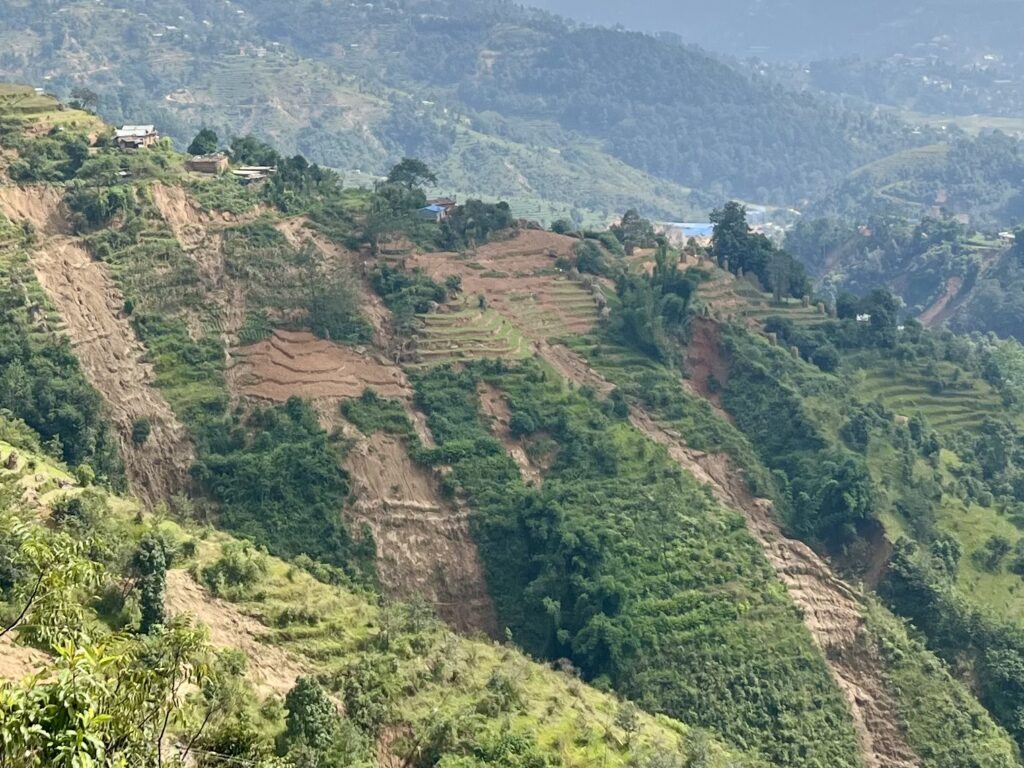
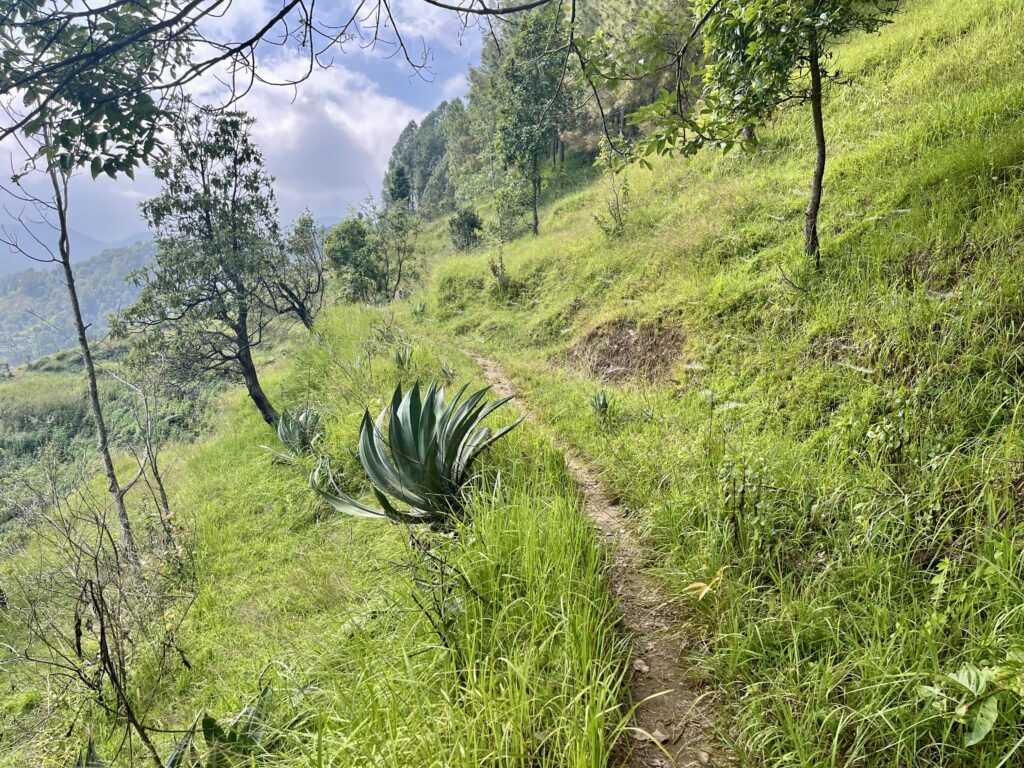
Panauti is a small historic town in central Nepal, is known for its rich cultural heritage, traditional Newari architecture, and sacred temples. Located about 32 kilometers southeast of Kathmandu, it sits where the Roshi and Punyamati rivers merge, a site believed to be holy and spiritually cleansing.
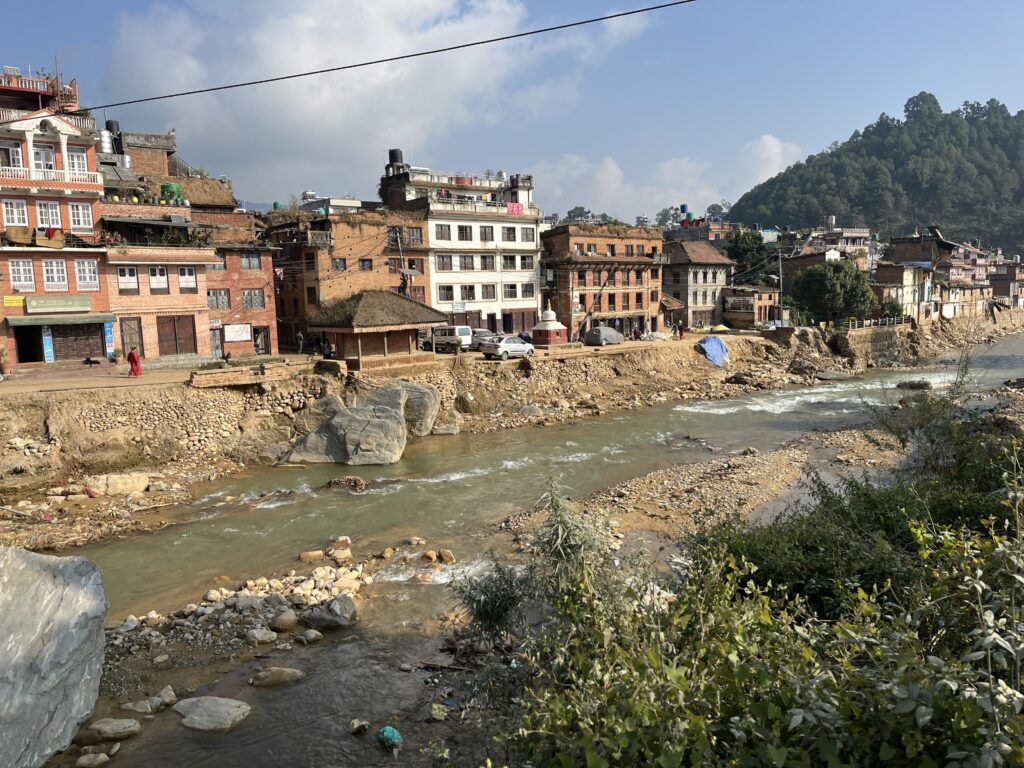
Enthusiastically welcomed at our homestay, we were just in time to clean up before an incredible home-cooked meal, and the best Masala Chia latte ever. The next morning, I discovered that our hostess added a bay leaf to the chai as it was brewing. That is a game-changer for my own masala recipe. That afternoon was our MoMo cooking class down the street at another home in the homestay network, which was a good time, but more difficult than it looked. Momo’s are a Nepali staple. They are dumplings and a new favorite food of mine, although my attempts at constructing and filling them were dismal. Participating in the cooking class with us were a writer for National Geographic with a photographer on assignment….we love meeting interesting people. Later, we dropped into a neighbor’s shop and got our first Tika applied to our foreheads, along with a small gift of paper currency. It was an absolutely cool, yet humbling, experience as they truly are sincere about it.
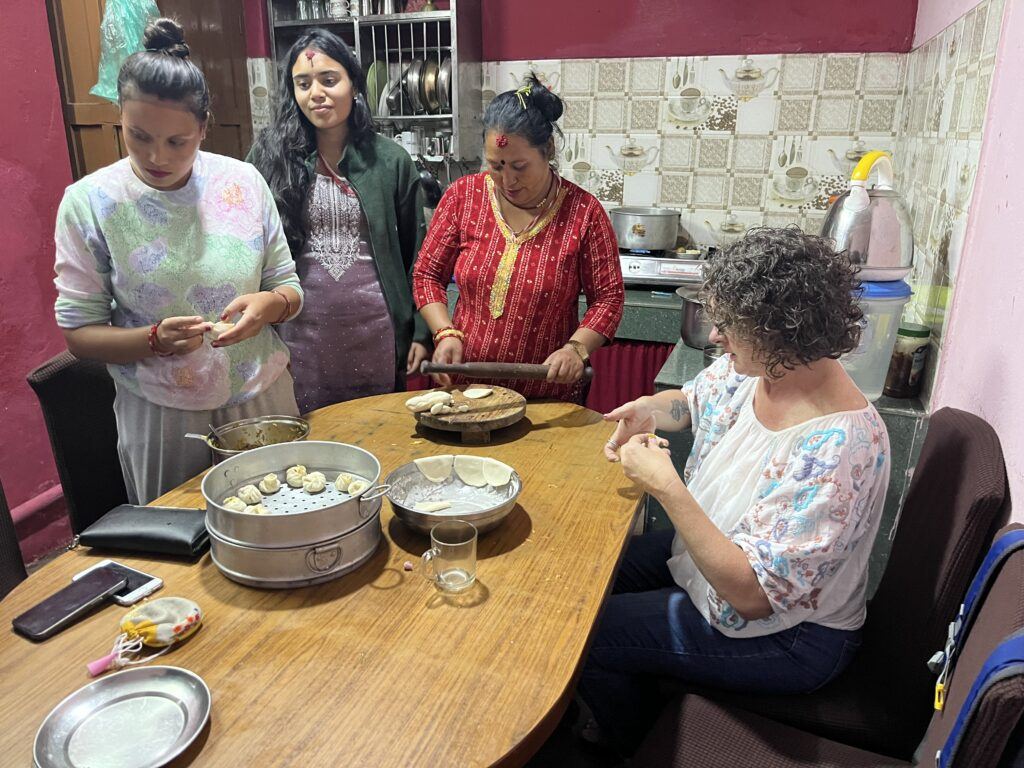
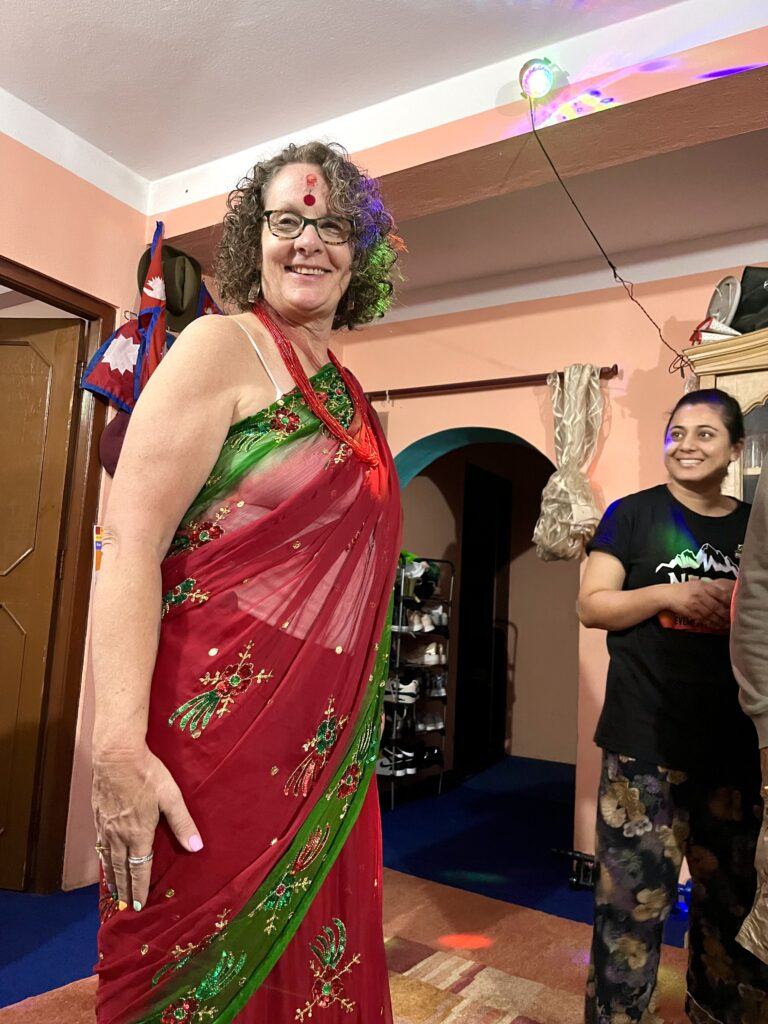
After a lovely dinner with the family, they dressed Julie up in a traditional Nepali dress, gave her a henna tattoo on the back of her hand, and we all received another Tika and a few bills. We then hung out as they proceeded to play cards, laugh hugely, and generally have a big time as part of Dashain festivities. Oh boy, what a night!

The next morning, our host cooked us another fine meal. We found the fresh yogurts we were served during this trip to be exceptional. A small bowl of yogurt was a part of nearly every meal.
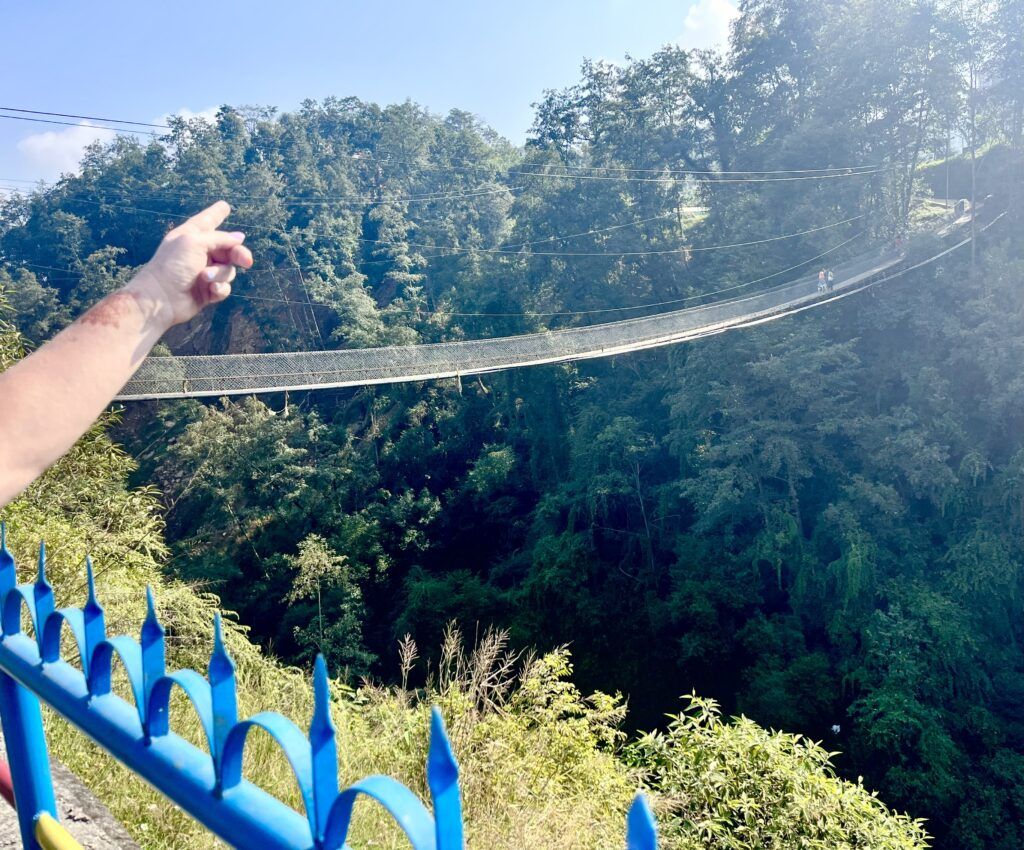 Our adventure for the day was a city bike tour, which was a bit more difficult than we expected. It was not a typical city tour on level paved streets. A travel writer friend of ours, whose post was how we found this homestay experience, had gone on the city bike tour and wrote that it was a little technical. So it was. But then again, we were in Nepal at the foot of the Himalayas, and we hadn’t been on bikes for a while. It wasn’t easy, but it was a very pretty and interesting ride, including a ride across a standard suspension footbridge to check for acrophobia. Later, we walked down to another homestay and learned to make traditional coin purses in the home of the woman who started the homestay network in Panauti….I wonder who will be the lucky ones at Christmas?
Our adventure for the day was a city bike tour, which was a bit more difficult than we expected. It was not a typical city tour on level paved streets. A travel writer friend of ours, whose post was how we found this homestay experience, had gone on the city bike tour and wrote that it was a little technical. So it was. But then again, we were in Nepal at the foot of the Himalayas, and we hadn’t been on bikes for a while. It wasn’t easy, but it was a very pretty and interesting ride, including a ride across a standard suspension footbridge to check for acrophobia. Later, we walked down to another homestay and learned to make traditional coin purses in the home of the woman who started the homestay network in Panauti….I wonder who will be the lucky ones at Christmas?
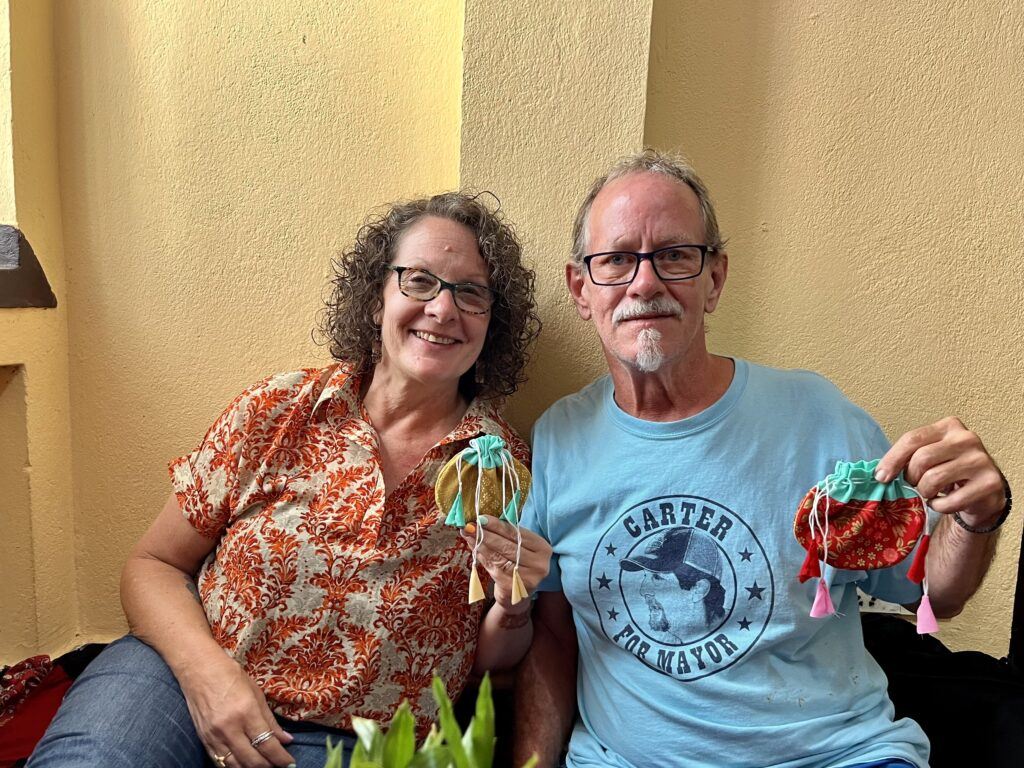
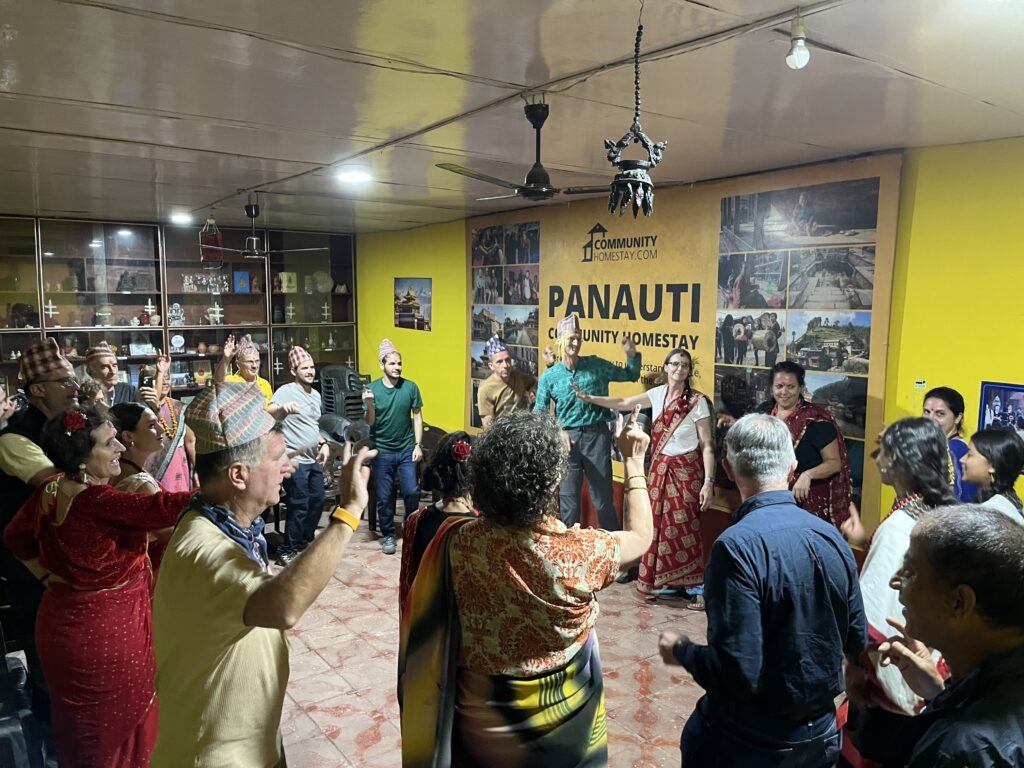
There was also a meeting hall where all of the homestay guests in town come together most nights to watch traditional dance demos and have a chance to participate in a few as well. A fun group of Italians showed up, and it was a great time twirling around. The fluidity of the dances is amazing and certainly must take more practice than I received that night. When I took a break between dances, I got a kick out of seeing one guy outside trying to smoke some green marijuana he had picked on the side of the trail. We saw it growing all along our hike.
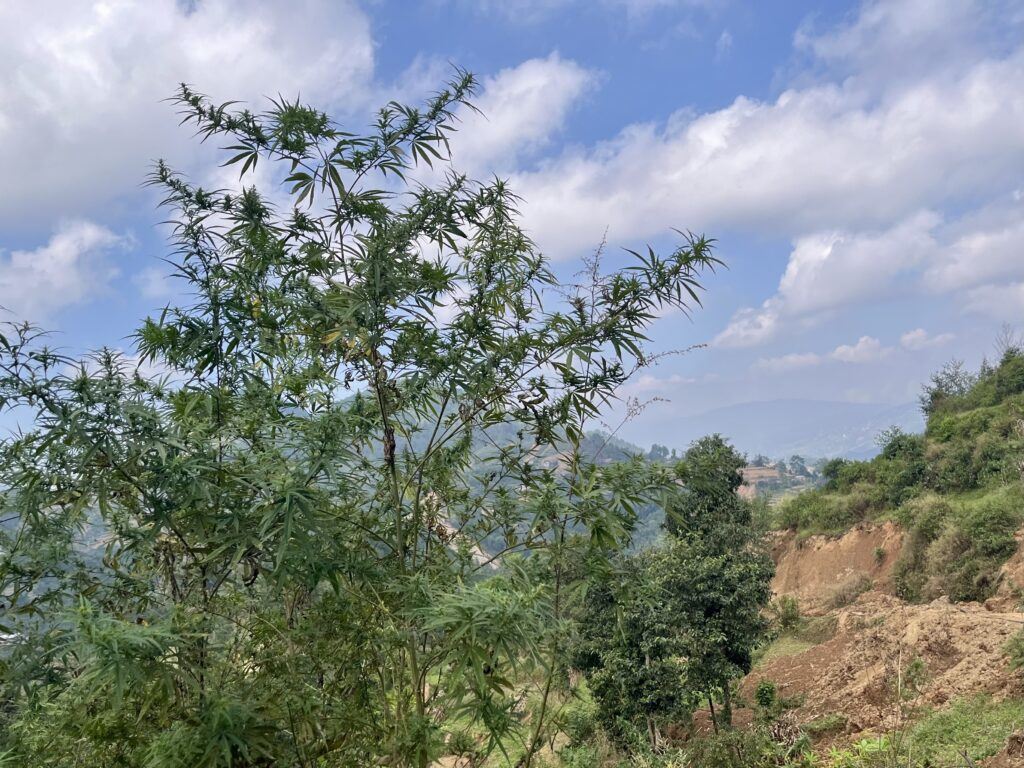
About the Community Homestay Network;
Since launching in 2012 with just a single homestay in Panauti, the Community Homestay Network has grown into a thriving social business—now operating in dozens of communities across Nepal and benefiting hundreds of households. CHN connects travelers with local families, giving visitors an authentic cultural immersion while ensuring 80% of revenue directly supports host families; the remaining 20% funds operational, marketing, and community development needs. Its initiatives benefit women profoundly, offering them economic independence, a stronger voice in their communities, and leadership opportunities—often for the first time because Nepal is a patriarchal society.
With over 30 local destinations to choose from, as well all sorts of cultural experiences, they have you well covered. Really wonderful people, from the group in their Kathmandu office, to the folks hosting you in their homes, as well as the guides and teachers. Besides the trek in, we picked a city bike tour, the sewing class, and the cooking class, but there were other options, including another hike to the Namobuddha Monastery. Here is their website. https://g.co/kgs/s5YG3YW
Namobuddha Monastery
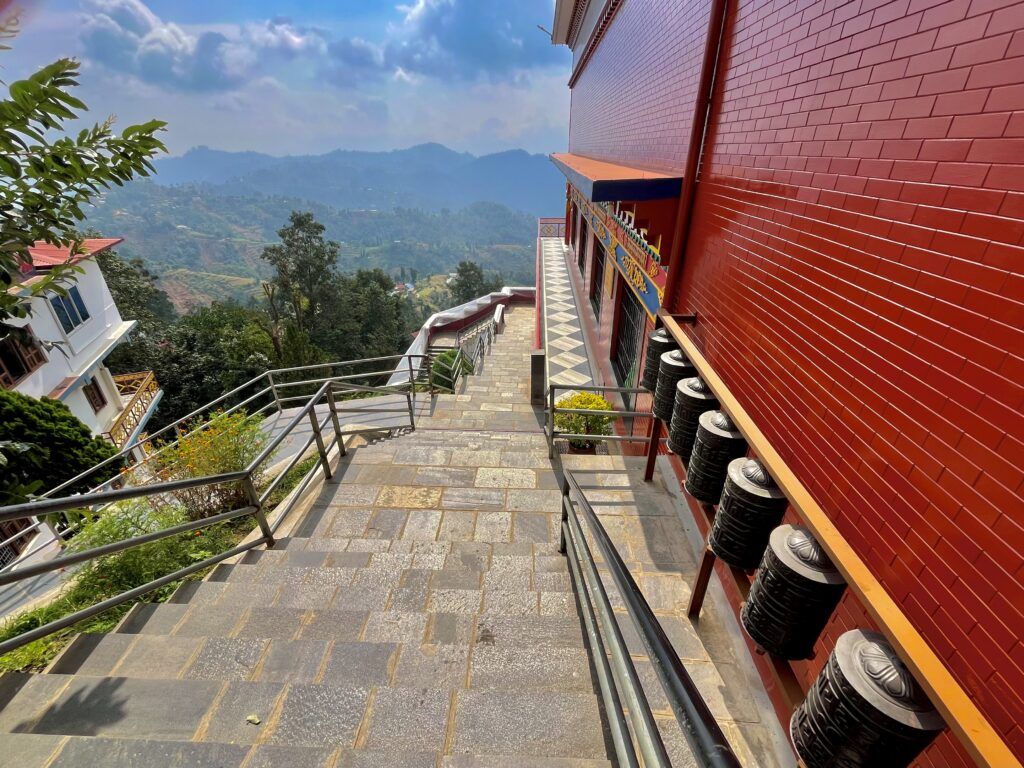

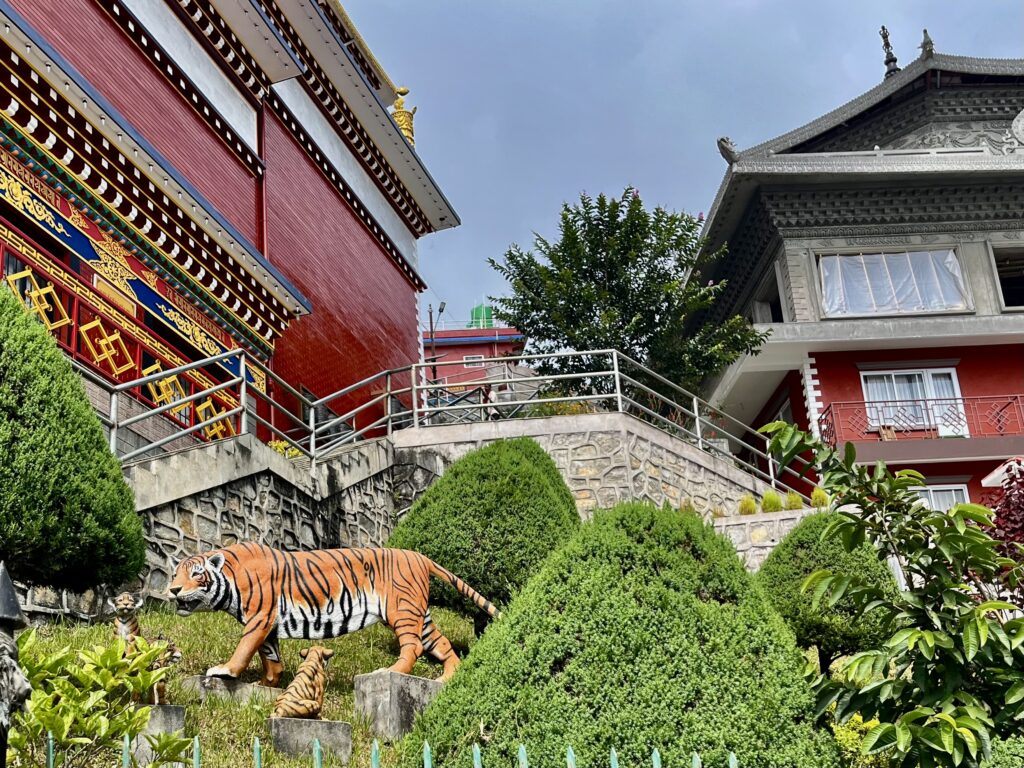
After our hike in and our technical bike tour, the morning of our last day, we decided to drive to the Namobuddha Monastery, also known as Thrangu Tashi Yangtse Monastery. It is a revered Buddhist site located on a peaceful hilltop about 40 kilometers southeast of Kathmandu. It is one of the most important pilgrimage destinations for Tibetan Buddhists, closely linked to the legend of the Buddha’s past life as a compassionate prince who offered his body to a starving tigress and her cubs. The monastery, built in vibrant Tibetan style, is home to hundreds of monks and serves as a center of learning, meditation, and ritual practice. Visitors are drawn not only by its spiritual significance but also by the breathtaking panoramic views of the Himalayas and the serene atmosphere that makes it an ideal retreat for reflection and prayer.
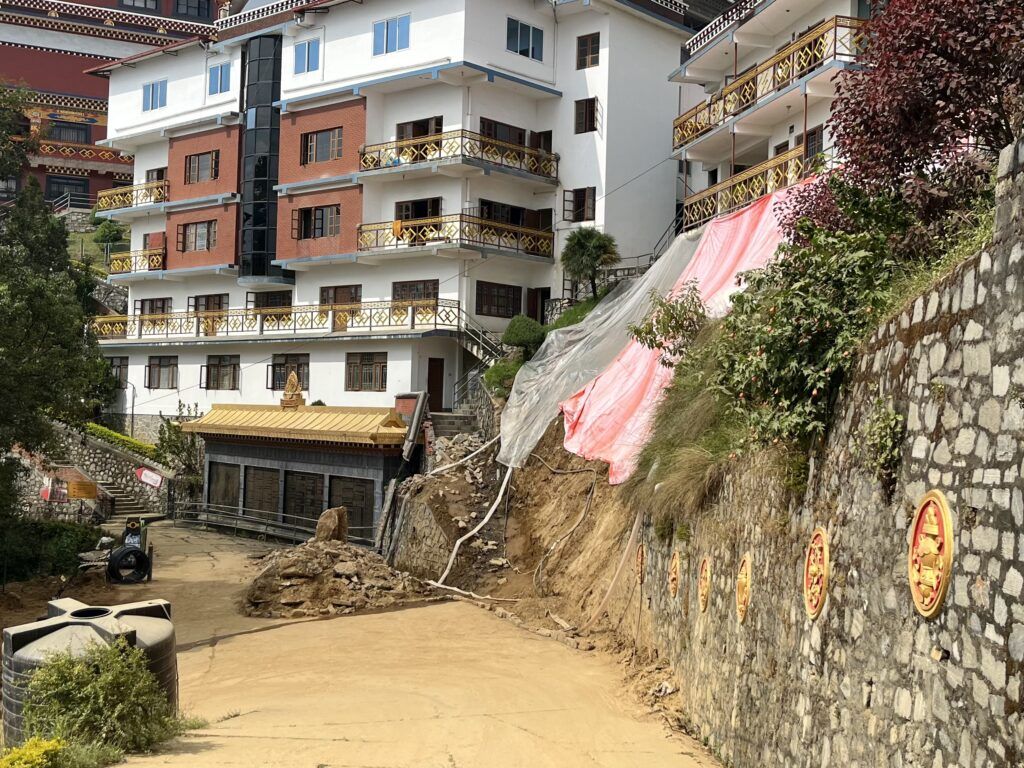
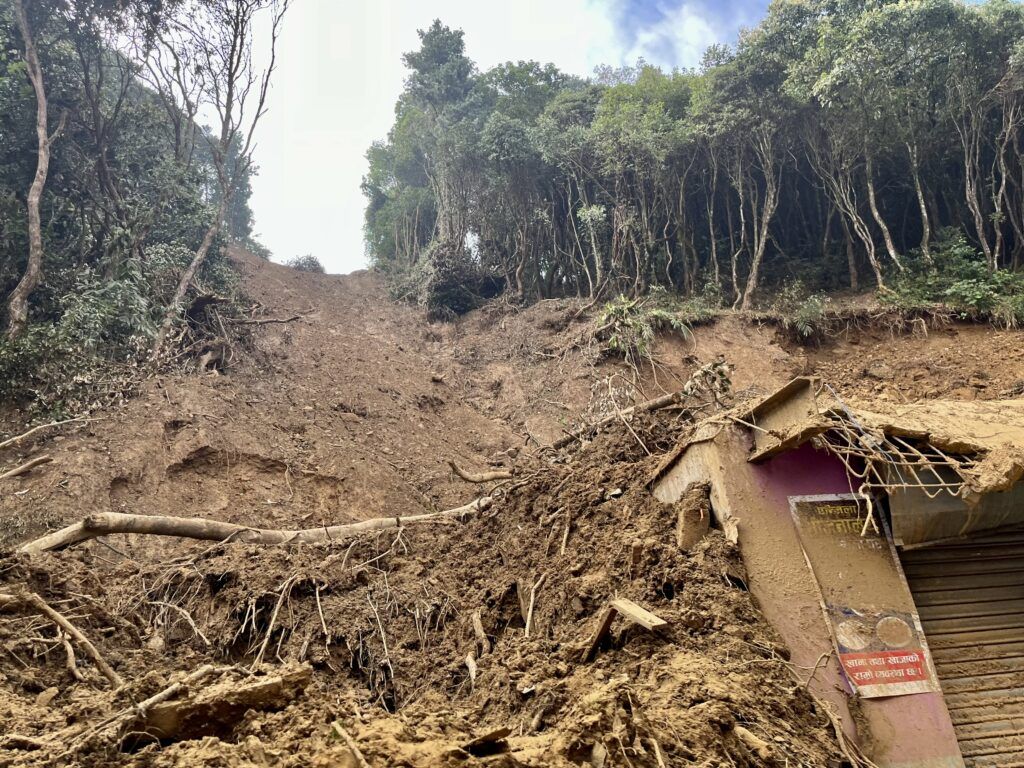
We saw lots of big landslides on the steep road on the way up to the monastery, with some damage to parts of the complex. The hike up looked fairly brutal, so we patted ourselves on the backs for our decision to ride up instead.
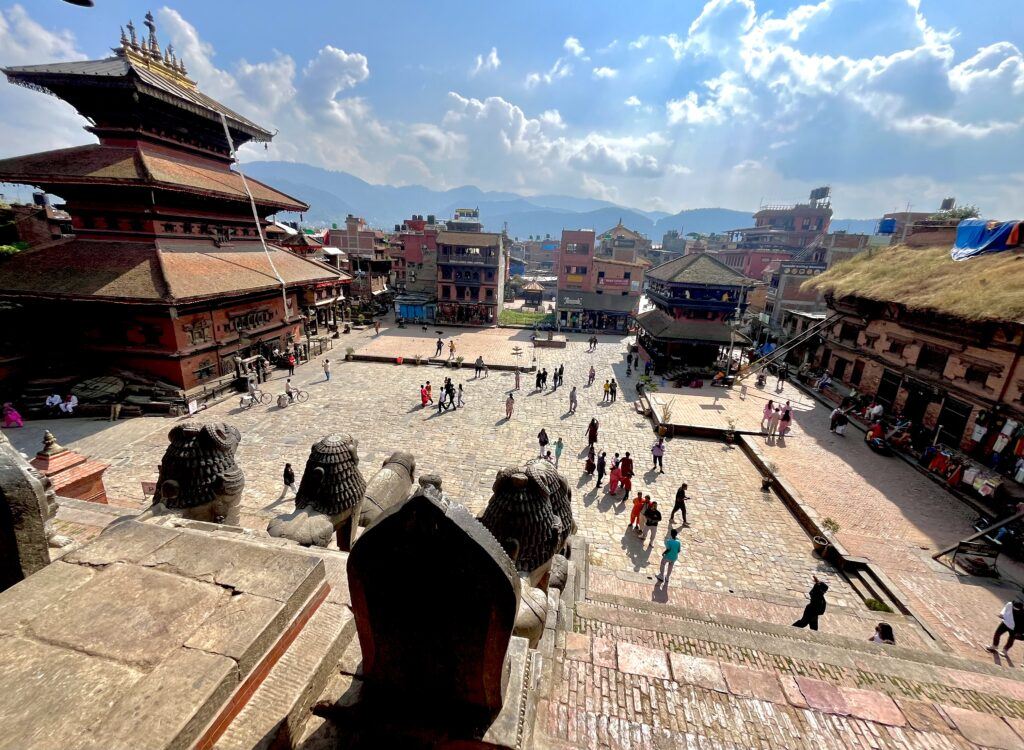
Because we did not hike, we had time on our drive toward Kathmandu to visit the ancient valley city of Bhaktapur, where we spent the afternoon touring the old town, eating lunch and visiting the shops and temples. Carved wood is one thing the city is famous for, and we saw some of the wildest ancient woodwork that I’ve ever seen, especially in the architectural details. The paper factory we were guided through was stuffed with carvings, none for sale though.


At the end of the Day:
For a personalized experience like this, the money spent was well worth it. Feeling comfortable and at ease was never a problem in the homestay, as that is not a worry with any of the homestays we’ve used. Want to hang out in the kitchen or test a hammock, no worries. This groups has changed the dynamics of these little towns…. bringing income as well as keeping some of the youth from moving to the big city. We had a great time and I bet you will too. So travel light and remember…. leave Slowly, and come back Quickly!
